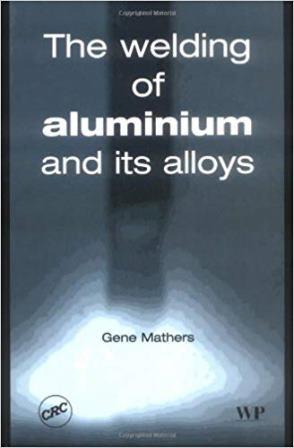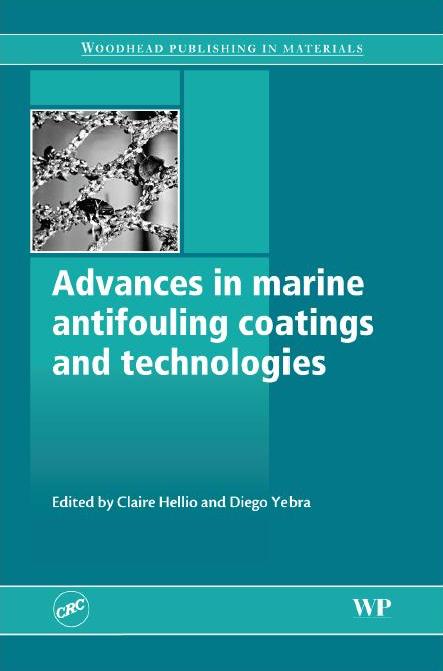 The content of the present publication was specifically developed to assist people working with the aluminium as well as various aluminium alloys. As you know, subject material is in quite wide use in the contemporary shipbuilding. Since connection of different parts of the ship’s hull normally implies their welding one to another, it is very important for the workers and designers to have a good understanding of the welding process.
This is also important because having a good technical knowledge on this would help in evaluation of the weld design at earlier stages, predicting all possible problems in the future. The content of the book will provide all of them with the basic information relating to the metallurgic principles, which they well have to be aware of in order to do a good and defect-less job.
The volume shall be used as a comprehensive guidebook to all shop-floor engineers since the author has covered all important areas including weldability of the aluminium alloys, advantages and disadvantages of application of the different processes, quality assurance and control, solving of the different problems involved, and many other aspects deserving attention.
 It is well known from the marine history that from the first steps done in the navigation, the marine fouling, i.e. growth of various aquatic organisms on the ships underwater parts was always treated as a very serious problem. This book is aimed to address some key aspects of the technologies of development and application of the anti-fouling coatings intended to protect the ships hull.
The following aspects are covered in this volume: Marine fouling organisms, their impact on the hull, chemically active marine antifouling technologies, development of antifouling coatings and their testing, various surface approaches to the control of marine bio-fouling. The content of the book reflects the result of the authors to make a summary of the researches in the field and their practical implications. The material presented in the book has been compiled using the valuable contributions provided by the international experts and editors.
As a result, this standard reference volume will be very useful for the manufacturers of the AFS, maritime industry, participants of the oil and gas industry, as well as of any other industry using different offshore structures, plus the researchers and scientists. The book provides the assessment of the marine anti-fouling organisms and the impact they may have, discussion of the major developments and examination of the new surface approaches, plus the review of the environmentally-friendly alternatives...
 This publication can be considered an easy reading for the people involved with the maritime industry, and for all others it will be a great introductory volume providing general information on the ship technology. Starting with some background on today’s shipping and shipbuilding industry, the author proceeds with the absolute basics of the naval architecture.
The top important aspects of powering the vessel and ship design have been provided along with the essentials of the ship construction. The safety of the ship and personnel at sea is addressed, as well. Moreover, in addition to the conventional vessels, the author has also covered the navy ships and underwater vehicles. It shall be noted that this is neither a textbook nor an exhaustive reference book on the ship technology.
The idea of the author was rather to provide some very basic introduction so that the readers can follow up, should they get interested in the thing. That is why each section consists not more than a couple of pages giving compact and concise introduction which, however, will be enough to understand if this can be the area of the readers’ interest. The volume closes with an article devoted to the future of shipbuilding.
 The content of the present publication is mainly aimed at the professionals of the shipbuilding industry, including ship designers, who are willing to improve their knowledge of the subject and to know more about one of the most critical problems of shipbuilding, namely corrosion of the ship hull metal when submerged into the sea water.
The decades of the practical experience found their reflection in this excellent volume encompassing the major areas concerned. For the easier understanding of the material, same is arranged in eight sections, first one being introductory and containing general information. Among the metal materials covered by the authors there are steels, including iron, carbon and stainless steels, and alloys, including copper, nickel, aluminum and titanium alloys.
The closing section of the publication is entirely devoted to the problem of galvanic corrosion which definitely deserves attention – here you will find the useful information that will help you to avoid this sort of corrosion. The title belongs to the series of EFC, standing for the European Federation of Corrosion, publications and the texts shall be read by anyone in the business of shipbuilding.
 Floating dry docks are often referred to as "floaters" - they are engineering structures having enough size, strong construction and displacement as well as sufficient stability to be able to lift vessels from the water using the buoyancy. The floating docks can normally be operated with list and trim to reduce block loading and reduce or, ideally, to eliminate ship stability problems when docking or undocking.
Some shipyards are equipped to transfer vessels to shore from a dock, which enables concurrent work on multiple vessels. The common construction of the docks implies a pontoon and wing walls. The pontoon is considered the major structural component of any FDD, i.e. floating dry dock, that shall be designed to provide due distribution of the concentrated blocking loads from the vessel to the docks deck and ultimately to the uniform buoyant force on the hull.
The pontoon provides the transverse strength for the dock as well as contributing to the longitudinal strength. Additionally, the pontoon must feature sufficient size to be capable of providing enough displacement to lift the ship together with the dock from the water. In short, this is must-have book for all shipyard specialists engaged in docking activities.
 This publication is in a very wide use in the various industries, including ship building, construction and repair. The volume is intended to provide readers with a good and thorough intro to the most important areas of contemporary welding engineering. The topics included in this book have been explained in a really simple and clear manner and the main accent was made by the author to the essential engineering matters.
The book features a remarkably comprehensive coverage of the different topics considered important. It was prepared as a good reference book to be used by the students; however, it will definitely be equally useful to the professional engineers. While it was not designed to be used as a handbook, it provides all basic information they may need.
The publication has gained worldwide popularity and not only among welding engineering students but also among the representatives of different areas, considering the fact that nowadays welding is applied virtually everywhere and having a good understanding of the welding concepts is a real prerequisite to the good handling of any design or construction activity and shall be possessed by any engineer, specialist and technician.
 This perfect handbook is mainly aimed to provide all interested parties including general readers and industry people with the easy access to the wealth of practically useful information directly relating to the problem-solving. It offers numerous handy data charts and tables, supplemented with formulas and informative illustrations.
As per the numerous opinions provided by the industry experts from different countries, this book shall be treated as the valuable working instrument expected to be used by all steel designers. The content has already been highly appreciated by the specialists dealing with the design of the various steel structures.
This is the fourth release of the handbook, substantially updated and revised to make the content even more user-friendly and duly reflect all developments in the field of steel design. All of the descriptions and examples contained in the book have been brought in compliance with the last AISC, AISI and AASHTO updates. The content is giving all basic data including the demonstrations of its application.
The text of this nice manual intended for use by the practicing engineers is also demonstrating all application of this info. The publication is divided in several chapters compiled using the invaluable contributions provided by the leading experts in steel design.
 This nice and comprehensive title is specifically intended to clearly describe the matters relating to the NDE, standing for the non-destructive evaluation, and commonly associated with the real-life applications of the NDE methods, detailing both existing, i.e. conventional plus also the forthcoming techniques of such evaluation. Through the content of his work, the author is instructing readers on the current practices, commonly used techniques and equipment in use, together with the limitations and future potentials of the existing methods of evaluation.
Each chapters is detailing a particular NDE method, providing a comprehensive technical overview and clear explanation of the basic physical laws that are governing this method, covering also the inspection techniques. The authors are also discussing some historical background of each of the methods covered. The equations used for calculating have also been dealt with. It is a really perfect source of reference info for people willing to get better understanding of the techniques.
The book shall be equally useful for the students and specialists since the information is presented in a very simple and clear language; the authors have managed to prepare an excellent blend of the fundamental and advanced information addressing the most popular non-destructive testing.
|







